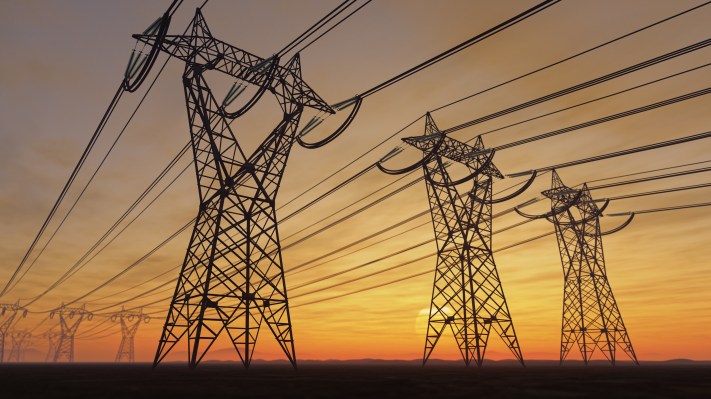The largest funding rounds raised by startups are becoming rarer and rarer. For upstart companies working on the future of energy, however, the market is surprisingly strong.
The venture deceleration, and its late-stage glaciation, are not stopping the companies that want to reinvent energy from raising huge rounds. Given what we’re seeing around the world, it’s a welcome fact, even if it does feel a decade or more too late.
Powering up
Nine-figure rounds are often called “mega-rounds” due to their massive heft. During the first two months and first days of March last year, some 12 deals met our “energy” criteria, tracking companies that are working in power generation and distribution using Crunchbase data. This includes projects like solar power generation, batteries and EV charging. We did not include OEMs that build electric vehicles like Lucid or Fisker in our analysis, however.
From the start of 2023 through March 4 of the same year, 11 deals met our criteria. Of that group, seven were based in China. During the same portion of Q1 2024, we saw 12 deals that met our standards. However, this time around only one was a Chinese company.
A reformed global venture capital market
As the global venture capital market adjusts to persistently higher interest rates, capital flowing into technology startups has slowed. The deceleration of private-market investing into private tech companies has been especially sharp in the later-stages of startup formation, thanks to a limited exit environment and less ebullient public-market valuations for many software companies.
Later-stage startup dealmaking has changed so much in the last several quarters that it’s easy to forget how bullish private-market investors were in recent years. CB Insights reported that from Q1 2019 through Q4 2022, every quarter saw more than 100 nine-figure deals, or startup rounds worth $100 million or more. In contrast, Q4 2023 saw just 78, the worst result since at least the end of 2018.
More recent data underscores a continuing trend. A TechCrunch analysis of Crunchbase data found that from January 1 through March 4 2023, around 115 rounds met our criteria for nine-figure private-market deals (excluding private equity, all post-IPO transactions, certain debt rounds, etc.). During the same portion of this year, the number fell to 75.
If the number of energy-focused mega-rounds was all but flat year-over-year, why highlight the metric? Because energy-focused mega-rounds made up a larger portion of the nine-figure deals that TechCrunch analyzed, from just under 10% in the 2023 period we are examining to 16% in the same portion of 2024. That’s a more than 60% gain in relative share, a massive shift for any single sector in just one year.
That’s why the 12 venture capital rounds that we saw in the energy sector stood out to us like a beacon; there aren’t that many to see, period, making the density in one sector that is not as known to be in favor (as with AI) all the more remarkable. And with a massive geographic shift underway at the same time, something is clearly heating up in energy-land.
Inside energy’s power surge
In 2023, China dominated energy mega-rounds, with most of the money going to makers of solar panels and battery materials. Both are sectors that China has lavished with incentives and state funding, and as a result, the country has dominated the market for both. In 2021, 75% of the world’s solar modules and a whopping 85% of all cells were made in China, according to the International Energy Agency. The new funding, therefore, was less about investing in a promising market than lapping the competition.
The same could be said for battery materials. Chinese companies own 75% of the graphite supply chain, which encompasses everything from mining to finished anodes, according to Benchmark Minerals Intelligence. And yet two Chinese companies attracted a combined $380 million of investment in the first quarter of 2023.
Fast-forward to this year and the picture in energy mega-rounds looks dramatically different. Diversity is the name of the game. Only one Chinese firm cracked the top ranks, with the remainder almost equally balanced between the U.S. and EU. That’s because of industrial policy: The Inflation Reduction Act in the U.S. and the Green Deal in the EU offered hundreds of billions in incentives for manufacturers and suppliers to set up operations onshore. In return, companies have invested hundreds of billions more. These mega-rounds are a reaction to market trends, suggesting that the reshoring of key parts of the climate tech economy will persist for years to come.
Geographic diversity is only part of the picture. Where solar and battery materials captured the lion’s share of megadeals in 2023, the same round sizes this year have been spread across a range of technologies. Geothermal energy, industrial heat, e-fuels, battery recycling, EV charging, lithium mining and geologic hydrogen are all accounted for. Even heat pumps, a decades-old technology, received a €145 million infusion — that’s how promising that market has become.
The wide range of industries represented this year suggests that many formerly early-stage companies have mastered their science or technical risks and have started their journey toward commercialization. Investors appear confident they’ll make it, too, happy to underwrite a part of the startup journey that delivers smaller though more likely returns. The IPO window is still probably a few more years away for these companies, but the check sizes suggest that investors can see it on the horizon.
With the ocean at record temps, news about sea ice looking grim and droughts hitting hard around the world, it’s a good moment to sit back and consider what we are doing to our small planet. The above investing trends are welcome, but with carbon emissions still setting records, we’re still throwing cups of water at a house fire. More, and faster, please.
